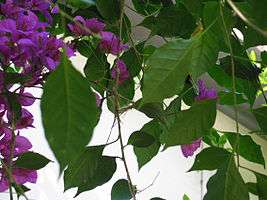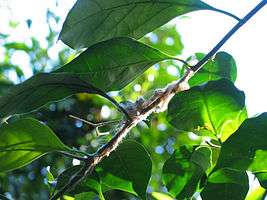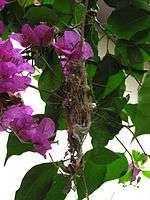White-throated gerygone
| White-throated gerygone | |
|---|---|
| | |
| Scientific classification | |
| Kingdom: | Animalia |
| Phylum: | Chordata |
| Class: | Aves |
| Order: | Passeriformes |
| Family: | Acanthizidae |
| Genus: | Gerygone |
| Species: | G. olivacea |
| Binomial name | |
| Gerygone olivacea (Gould, 1838) | |
The white-throated gerygone (Gerygone olivacea) is a species of bird in the Acanthizidae family. It is found in Australia and Papua New Guinea. Its natural habitats are temperate forests and subtropical or tropical moist lowland forests. Its common names include white-throated warbler, white-throated flyeater, bush canary, and native canary.[2]
References
- ↑ BirdLife International (2012). "Gerygone olivacea". IUCN Red List of Threatened Species. Version 2013.2. International Union for Conservation of Nature. Retrieved 26 November 2013.
- ↑ Reader's Digest Complete Book of Australian Birds. Reader's Digest, Sydney, 1979. ISBN 0-909486-50-6
| Wikimedia Commons has media related to Gerygone olivacea. |
| Wikispecies has information related to: Gerygone olivacea |
White-throated gerygone Gallery
- Gerygones Nesting in Bougainvillea, rural New South Wales garden

Fig 1. The bird(s) wound sticky threads around a Bougainvillea stem.
These threads appeared to be spider web.
Fig 2. The nest was located in among the Bougainvillea foliage.
Both sexes seemed to help build it.
Fig 3. Other material was then stuck to the sticky foundation.
The birds did not work on the nest every day.
Fig 4. The weight of the nesting material and the gerygones
gradually bent the branch vertical.
Fig 5. The nest took several weeks to build.
It was made from strips of bark, twigs,
animal fur, and manufactured fibres.
Fig 6. This view shows the circular entry to the nest. 
Fig 7. This view shows the rear of the nest. 
Fig 8. The gerygones abandoned the nest soon after completion.
It may have been a decoy nest.
This article is issued from Wikipedia - version of the 11/9/2016. The text is available under the Creative Commons Attribution/Share Alike but additional terms may apply for the media files.
